Barley has long been a staple of many dishes, but this grain powerhouse can be hard to find sometimes.
Plenty of delicious substitutes are available that can still make your favorite recipes come out great.
In this post, we will discuss some of the best options to substitute for barley flour.
So you can continue enjoying tasty meals without worrying about tracking down this special ingredient.
What Is Barley Flour?
Barley flour is a traditional flour made from grinding dried barley grains.
It has a nutty flavor and is great for baking bread, pasta, cakes, cookies and other treats.
Barley flour can also be used as a thickening agent in soups and sauces or sprinkled on salads to give them an extra crunch.
Barley flour is high in dietary fiber and protein, making it a nutritious addition to any diet.
It is also rich in B vitamins and minerals such as iron, potassium, magnesium and zinc.
Barley flour can be found in health food stores or specialty grocers.
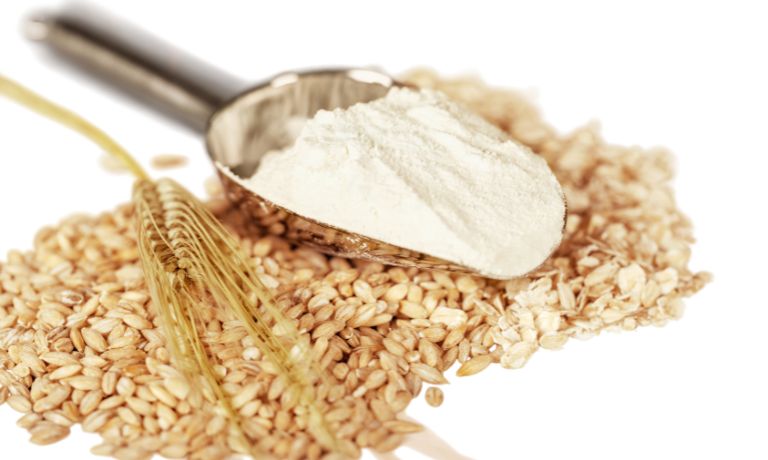
Substitutes For Barley Flour
Barley flour can be a great ingredient for baking, but if you’re looking for an alternative, there are plenty of options:
Bread Flour
Bread flour is a high-protein, finely milled white flour made from hard wheat.
Bread flour can be used in most recipes for all-purpose or whole-wheat flour.
When using bread flour instead of all-purpose flour, you should increase the amount of liquid called for in the recipe by about 2 tablespoons per cup of flour.
Bread flour can also be combined with other flours to add structure and texture to various recipes.
When using bread flour in combination with other flours, it is typically best to stick to a ratio of up to 25% bread flour, with the remainder of the flours being other all-purpose or specialty flours.
Bread flour can be used for baking, from making pizza dough and pastries to creating tender dinner rolls.

Almond Flour
Almond flour is a finely ground powder made from blanched almonds.
It’s commonly used as a substitute for barley flour in cooking and baking, and it has a mildly sweet flavor that complements both savory and sweet dishes.
Almond flour adds a nutty flavor to dishes and provides essential nutrients such as protein, fiber, healthy fats, Vitamin E, magnesium, and manganese.
Almond flour can be used in recipes such as pancakes, muffins, cakes, and cookies.
It can also coat meats, vegetables, or other ingredients before frying or baking.
Note that almond flour has a much higher fat content than wheat flour, so it’s best to reduce the amount of oil or butter in the recipe.
Additionally, almond flour absorbs more liquid than wheat flour, so recipes may require additional liquid ingredients such as water or milk.
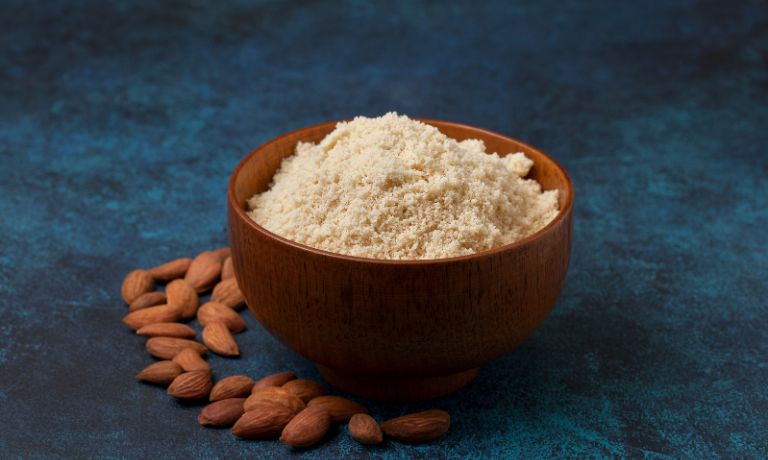
Sorghum Flour
Sorghum flour is made from the starchy grains of sorghum, a tall grass native to Africa.
It has many uses in cooking and baking, including as an ingredient in flatbreads, noodles, porridge, cakes, muffins and pancakes.
Sorghum flour is also popularly used as a thickening agent for sauces and soups.
It has a light, slightly sweet flavor and provides a nutty crunch to any dish. It is also rich in fiber, protein, vitamin B6 and iron.
Sorghum flour is available from most health food stores, specialty grocers and online retailers.
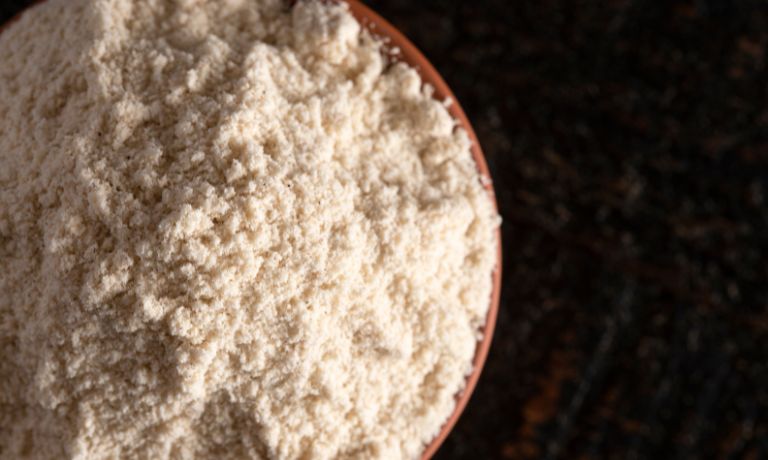
Spelt Flour
Spelt flour is an ancient whole-grain variety of wheat that has been around since the Neolithic Age.
It is high in protein, dietary fiber, and other essential vitamins and minerals like B, magnesium, iron, zinc and copper.
Spelt flour can make baked goods, including cakes, muffins, bread, and cookies.
It can also be used to make pasta and for thickening sauces and soups.
Spelt flour has a nutty flavor that lends itself well to many dishes, and its slightly sweet flavor is perfect for desserts like scones or crumbles.
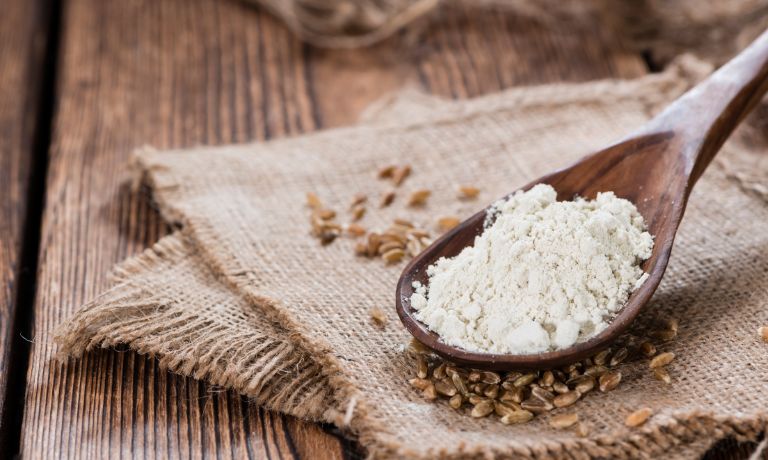
Einkorn Flour
Einkorn flour can also be a substitute for Barley flour. It is an ancient variety of wheat used for centuries.
It was the first type of wheat to be cultivated by humans and is still grown today in some parts of Europe and North Africa.
Einkorn flour is a whole grain flour, meaning all parts of the wheat kernel are ground into a powder.
It is often used for making bread, pasta, pancakes and cakes.
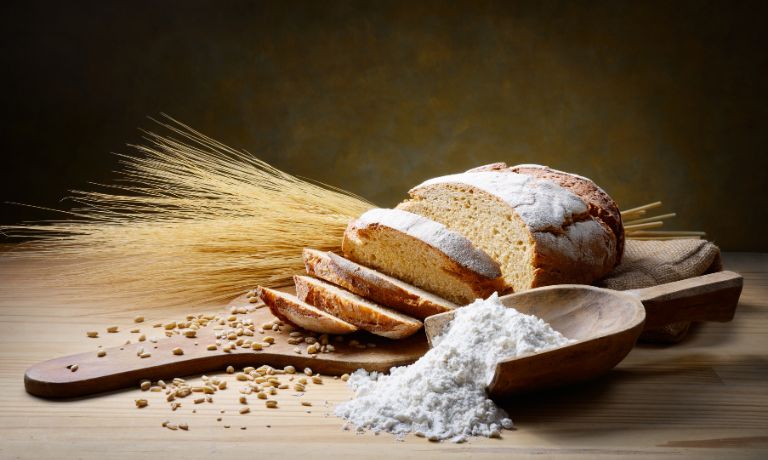
Red Whole-Wheat Flour
Red Whole-Wheat Flour is a whole wheat flour made from the entire wheat grain, including the outer red bran layer.
It is milled similarly to other types of whole-wheat flour but retains more nutrients and flavor due to its reddish hue.
Red Whole-Wheat Flour contains protein, fiber, and minerals like calcium, magnesium, and iron.
It is often used in baking to give a nuttier flavor and heartier texture than other types of flour.
For example, it can be substituted for all-purpose flour when making quick bread, muffins, pancakes, waffles, cakes, cookies and other baked goods.
Red Whole-Wheat Flour also makes an excellent coating for fried foods such as chicken tenders and fish sticks.
It can be used in soups, casseroles, and stews as a thickener or to give a nutty flavor.
White Whole-Wheat Flour
White Whole-Wheat Flour is made from finely milled whole wheat kernels containing the bran, germ and endosperm.
It is usually ground finer than regular whole wheat flour, resulting in a lighter texture and color that closely resembles all-purpose flour.
White Whole-Wheat Flour has the same health benefits as regular whole-wheat flour, including fiber and protein, but with a milder flavor.
White Whole-Wheat Flour is increasingly used in baking due to its mild flavor and light color.
It can be used in most recipes, making it an excellent choice for homemade bread, muffins, pancakes and other baked goods.
It is also a great option for pizza dough and pasta noodles.
FAQs
Can You Replace Barley Flour With Regular Flour?
Yes, although barley flour has a unique flavor and texture that is not comparable to regular flour, it can be used as an effective substitute in many recipes.
Can Almond Flour Replace Barley Flour?
Yes, almond flour can be used as a replacement for barley flour, although it will cause the texture of the baked goods to be different.
Can White Flour Replace Barley Flour?
Yes, white flour can be used as a replacement for barley flour in many recipes.
However, remember that the texture and flavor of the resulting baked good will not be the same.
Conclusion
Barley flour is the perfect choice for those seeking a nutty, slightly sweet flavor and chewy texture in their baking.
It provides essential nutrients and can be a thickener in some dishes.
Remember to consider the properties of that particular flour, such as its flavor profile, nutritional content, and ability to absorb liquids.
Some good options include bread flour, almond flour, sorghum flour, spelt flour, einkorn flour, red whole-wheat flour and white whole-wheat flour.
Each flour can bring something unique and delicious to recipes, whether a nutty flavor or a lighter texture.

